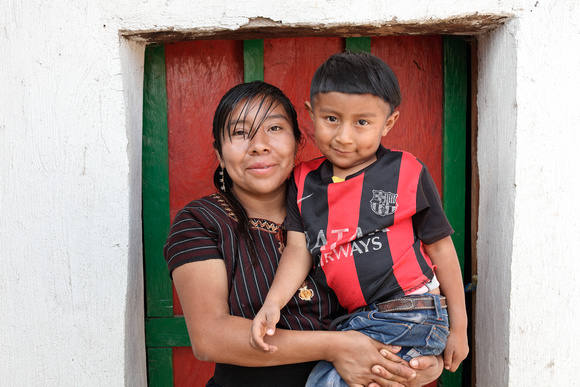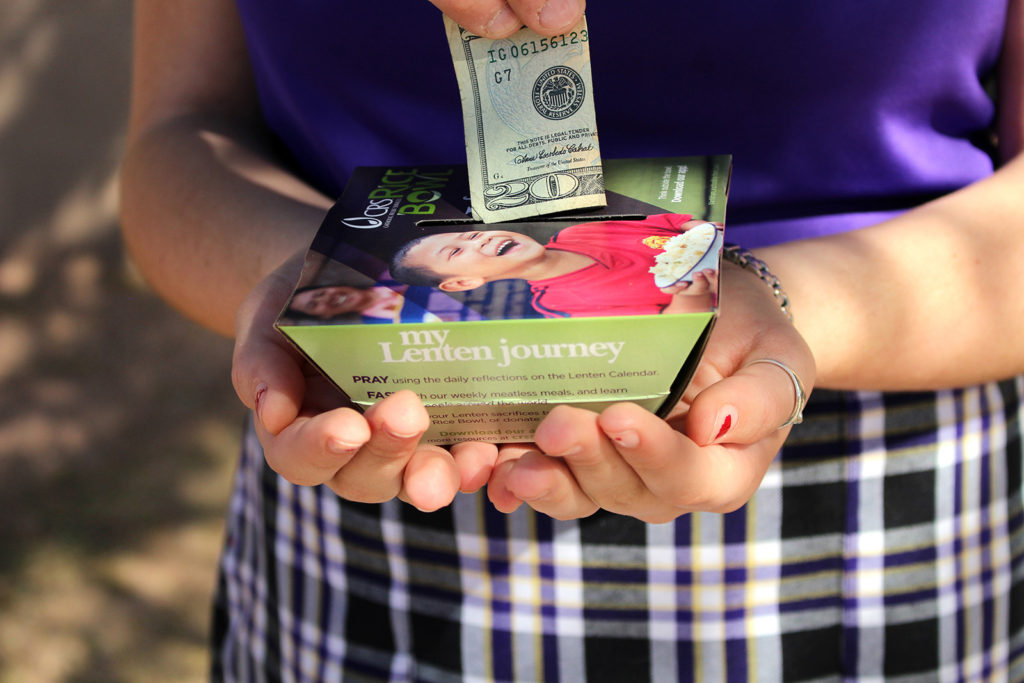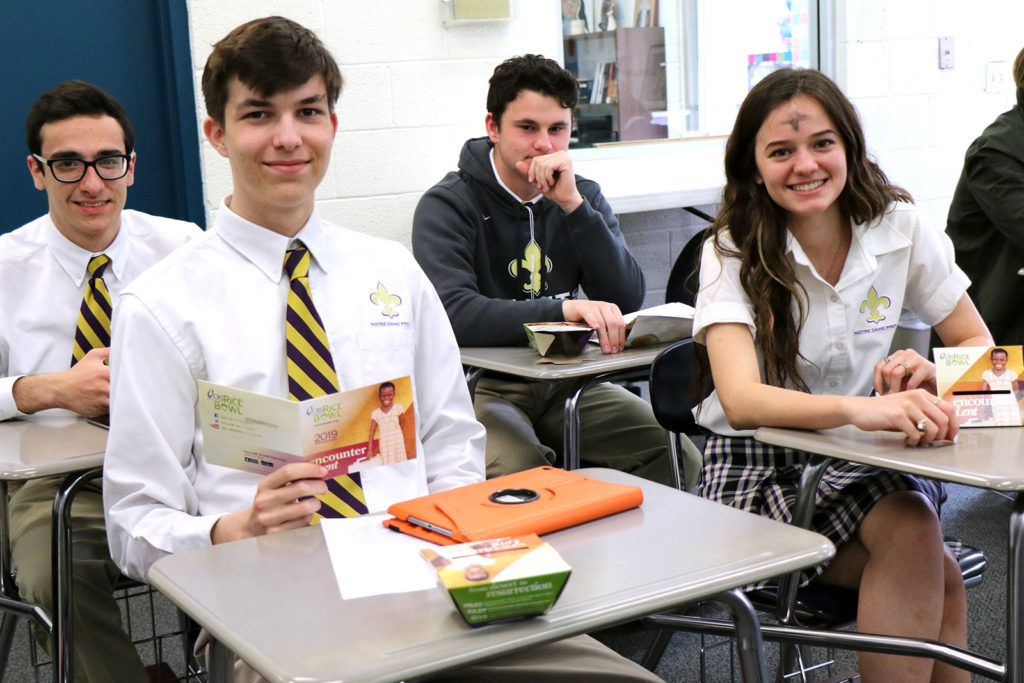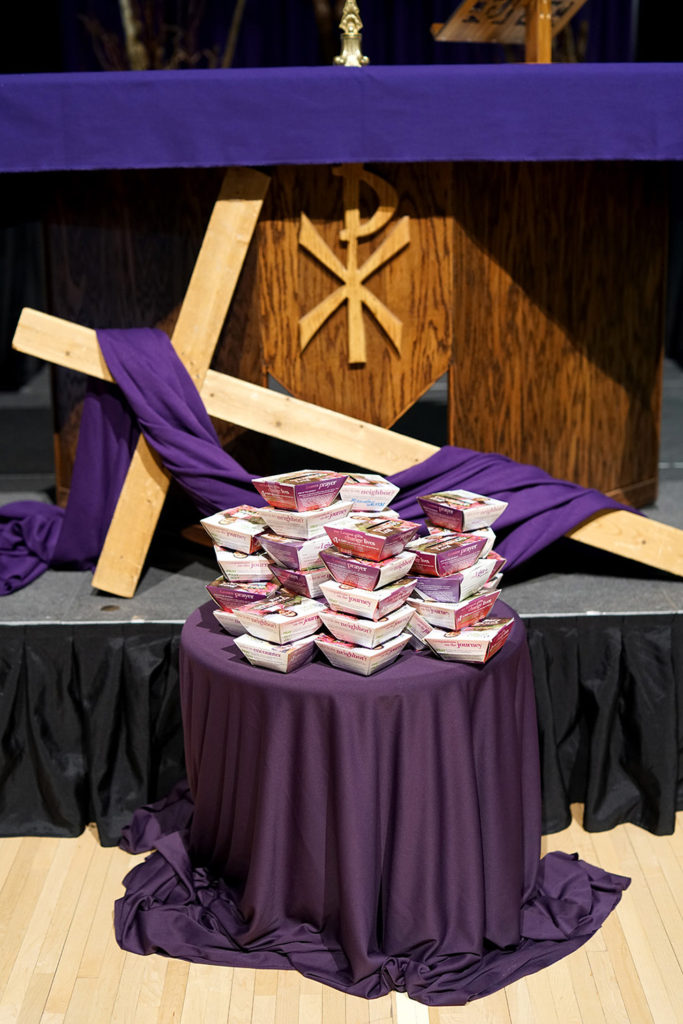

Some U.S. Catholics give up snacks or their favorite food during Lent. Meanwhile, peers across the world long for a bite to eat.
That juxtaposition, through the help of Catholic Relief Services, offers the latter group concrete hope. It also barely scratches the surface of what the CRS Rice Bowl program that runs each Lent in the United States does for its donors and its benefactors.
Just ask Thomas Awiapo for starters. Lenten financial sacrifices and donations stateside is what kept the Ghanan man alive past childhood. His parents died when Awiapo and three brothers were young.
The boys mooched off of an equally poor neighbor as long as they could before moving on to the next one. They were lucky to get the equivalent of one meal each day. The youngest brother died of malnutrition in Awiapo’s arms. Then Awiapo discovered he could get free food, what he called a “snack in a box,” if he showed up for school. It’s one of many programs CRS runs in 110 countries with funds that pour in through CRS Rice Bowl and other donations.
“There are still many, many hungry children in our world. Believe it or not, there are hungry children in this country too.”
Thomas Awiapo, Catholic Relief Services
Awiapo, who reluctantly finished his elementary education in order to earn food to eat, ultimately went on to earn a master’s degree in public administration from a California university with the help of CRS. He shared his story with members of the Diocesan Pastoral Center, college students at Tempe’s All Saints Newman Center and Benedictine University in Mesa, plus teenagers at St. John Paul II Catholic High School in Avondale during his annual U.S. Lenten tour.
“There are still many, many hungry children in our world. Believe it or not, there are hungry children in this country too,” Awiapo said.
By the Numbers
1975
Year began as “Operation Rice Bowl” in Pennsylvania and adopted by the U.S. Bishops in 1976
>$250 million
has been given out since its inception with $62.5 million staying in local dioceses
7,000
Global staff members serving 136.7 million people in 110 countries
$1
Amount of money per day throughout Lent that feeds a family for the month, offers seeds for a farmer for a year and supplies an emergency kit for refugees
66 percent
Amount of program services used for emergency response and recovery (44 percent) and health and HIV programming (22 percent), the largest program areas
CRS Rice Bowl efforts helps them as well. One-fourth of the collection a diocese produces — through individuals, parishes, schools and other groups who choose to participate — is returned to help with local food relief efforts. The 2018 CRS Rice Bowl diocesan collection brought in at least $43,000 for CRS projects. Of the funds that stayed within the Diocese of Phoenix, some St. Vincent de Paul food pantries got a needed boost. The St. Timothy conference in Mesa used $500 of its CRS grant to help re-stock the SVdP pantry in Gila Bend after it was broken into and cleaned out of food.
“They were watching the ads, and they were able to replenish a good portion of what had been lost,” said Mike Anderson, co-president of St. Timothy’s SVdP conference.
Most of the remainder supported neighboring Queen of Peace’s pantry with food.
“It’s just another way of spreading the help where it’s needed the most,” Anderson said. That’s not to say residents in his own conference area are without need. The St. Timothy conference gave out 37 food boxes in the last quarter of 2018, an average amount, and 133 the previous quarter. Food requests often spike in the hot summer months.
“It’s so good to give to a worthy cause, and CRS is one of them,” said Sr. Mary Angela Alexander, RSM, diocesan director of CRS. “It’s the arm of the U.S. Bishops that cares for the poor overseas.”
How it works
Donors who choose to participate — and some 4 million across more than 14,000 U.S. faith communities do — collect funds in a small cardboard box shaped into a humble rice bowl with a piggy bank slot as a foldable lid. Catholics of all ages drop in any monetary amount they see fit throughout Lent: spare change, the money saved through food fasts or another amount.

“It’s called ‘Rice Bowl’ because there are so many areas of the world where rice is the staple,” Sr. Mary Angela said.
CRS, which launched the rice bowl effort nearly 45 years ago, puts key project facts on each rice bowl panel and sprinkles gentle donation advice across the accompanying Lenten calendar. Organizers suggest, for example, dropping in 25 cents on March 21 per good deed performed that week. The act is an affirmation of living out the Scripture passage shared on the calendar that day: “Children, let us love not in word or speech, but in deed and truth,” (1 Jn 3:17-18).
Other calendar items regularly share stories of hope featuring a recipient of CRS efforts, facts about the five key countries profiled this year, additional Scriptures, fasting ideas and reflective questions inviting the donor to “stand with courage.” Calendar slots also connect Catholics with snippets of papal teachings.
It’s some of the pope’s recent words that Sr. Mary Angela said best connects CRS Rice Bowl to the Lenten pillars of prayer, fasting and almsgiving. Pope Francis’ Lenten message touches on those pillars reminding the faithful that fasting helps Catholics turn away “from the temptation to ‘devour’ everything to satisfy our voracity and being ready to suffer for love, which can fill the emptiness of our hearts.”
Almsgiving, which CRS Rice Bowl keenly helps Catholics exercise, helps Catholics escape from a hoarding mentality “in the illusory belief that we can secure a future that does not belong to us,” Pope Francis said. Instead, it helps them rediscover the joy in God’s plan that includes loving their brothers and sisters worldwide.
“Let us stand beside our brothers and sisters in need, sharing our spiritual and material goods with them,” the papal message said.
Rice Bowls at school
Students at Notre Dame Preparatory do so much to support CRS Rice Bowl and foster related prayerful experiences that the school was named a CRS Platinum Level Global High School in 2017. The young “saints” learn about CRS programming in theology class, can take home a blessed rice bowl after Mass if they want or contribute to a few bowls placed around campus.

Last year’s voluntary Rice Bowl effort yielded $3,100. NDP leaders also encourage students to serve during Lent at local organizations that help refugees.
“We see it as our Christian call to holiness to give back to the community,” said Leslie Gjerstad, NDP’s director of Christian Service Learning. “We want our kids to get to heaven by doing charity and giving back to people in need.”
This year’s CRS Rice Bowl collection is through the established “House System” with the winner earning bragging rights — and a free jeans day. Campus leaders expect to see healthy competition as a result.
Gjerstad said the students know their extra change or small donations such as the $5 beans and tortillas lunch on Ash Wednesday that benefited the rice bowl will translate to someone else in the world being able to eat for a day.
“Any amount they give will have a dramatic impact on somebody’s life,” she said.
Sr. Mary Angela explained how $20 in some countries can buy two goats for a village mother who once struggled to feed her children. Now, they had a source for milk and could even sell extra milk or the animal itself.
“What that meant for her practically, was less trips to the doctor because her children were healthier,” Sr. Mary Angela said.







